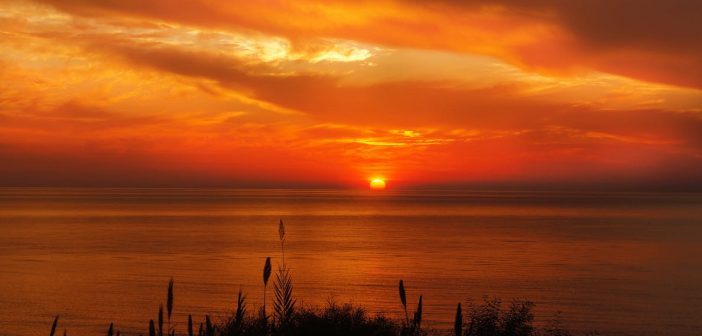The next best thing to seeing a beautiful sunset is painting one, or better yet – photographing one. However, as simple a subject as a sunset might seem, many photographers come away with images that don’t really represent the sunset that they saw. To photograph the essence of a good sunset, there are a few photo techniques to keep in mind.
From a standpoint of composition, sunsets with clouds in the sky often render much more dramatic images as compared to cloudless sunsets. Clouds tend to offer texture, shades of color and interesting design. When photographing a sunset, keep in mind the “Rule of Thirds”. Specifically if the sunset is very dramatic, position your horizon line in the bottom third of your frame. If your foreground and middle ground contain dramatic subjects, place your horizon line in the upper third of your frame. In a situation such as this, you might try underexposing your image to create silhouetted subjects against the sunset sky.
Regarding camera settings, if you are shooting in totally automatic the camera will try to neutralize the warm sunset colors, usually causing a dull overexposure to the sky. Set your camera to other shooting modes so that you are in control of the camera settings and not the camera. A perfect example is staying away from using Auto White Balance. Set your white balance to “Cloudy”. This causes the camera to add more red to warm the scene. Bracket your images by using “Auto Bracketing” or if not available, manually adjust your exposure compensation settings. An excellent accessory to utilize is a Color Grad Neutral Density filter, preferably one calibrated to hold back two f:stops of light. (ND 0.6) The Color Grad Neutral Density filter is a part clear filter that graduates into a neutral density filter. Thus you can maintain the objects on the ground with normal exposure and underexpose the sky for more dramatic sunset colors.
Finally, if you are familiar in shooting your image files in RAW shoot them that way as opposed to JPEG files. By doing this, you gain more image detail capture and can manipulate the image more in photo editing. Also in editing, you might want to “Saturate” the colors to become more vibrant or you can tone them down with “Exposure Level” to become deeper in color. With a little practice, you will find yourself capturing images of more dramatic sunsets.
John Spoltore is a professional photographer who also teaches a number of photo classes at various Long Island libraries where class tuition is free. For more details, contact Mr. Spoltore at swedephoto@msn.com







